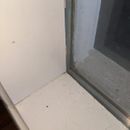Replacement Windows and Weatherization Details
Hello,
Our home was built in 1993 (Zone 5B) and many of the windows have no proper frame. I’m not sure what to call this technique but I assume it is the absolute cheapest way to ‘build’ a window. It appears the builder created a stud opening maybe 1″ larger than the insulated glass units that were eventually installed. The outside siding and trim were then installed and the insulated glass panel was installed from the inside (pushed up against the outside trim. Then a window jamb was installed against the glass on the inside. I have attached a few pictures.
Due to some other issues we are replacing these windows now. I’ve gotten a couple of quotes from local contractors and they have suggested replacement windows that will be installed from the inside. They would remove the inside jamb then remove the glass unit then install a vinyl window in its place. They would not remove or change the outside trim. When asked how they would weather seal / flash the outside, they say they would caulk the outside trim / vinyl window frame gap. This seems like a recipe for failure / water intrusion.
I have 3 questions about replacing these windows:
1. Is this type of window construction typical or am I dealing with something unique?
2. What are my options for replacement windows?
3. Does the outside trim need to come off in order to flash / water seal / air seal the replacement windows?
Thanks and best regards,
Kent
GBA Detail Library
A collection of one thousand construction details organized by climate and house part












Replies
Is it typical? No. Is it worth changing? Probably not.
The important detail you left out: are the frames solid, are there leaks, is the wood below the windows OK?
The retrofit technique seems just fine: the new window inserts get built to the dimensions of the old insulated glass units. You can then have operable windows or whatever.
Just watch out for one thing: Vinyl windows generally have weep holes on the outside that must not be blocked.
--
And, for the love of common sense, cut some wood in the shape of a triangle and get it on those sills to make sure they drain well. I would not mess with the outside trim for fear of the snowball effect.
THe new windows will look pretty small.
Why do they need to be replaced? If the IGUs are in good shape why not leave them?
I would be worried about water ingress with the existing system, I have similar windows in my house, they have frames, but the frames are really part of the house and don't come out. The glass is mounted from the outside so that there is a step preventing water from running inside the house if driven by wind.
I would not mount new windows from the inside, it seems to me to be asking for trouble. I would mount flange type windows from the outside and put new exterior trim.
Kent, that is a "direct glaze" system. I just replaced similar windows on a project a couple of years ago due to failed seals and I learned a lot while researching. I would have preferred to replace the existing units completely with new, framed, brand-name windows, but the cost difference was staggering. There was no evidence of the original 40-year old units leaking so we had a commercial glass company replace them from the exterior.
That said:
If it were my home, I'd probably add a sloped topper on the sill and leave the IG units until they fail. Then, replace them with new IG units in the same manner. This is to preserve the view area.
Why are you considering a change?
Thanks for the replies. The reason we're replacing these windows now (total of 7) is that they all either have a) a visible 'film' on the interior facing glass or b) etched in hard water deposits from poorly aimed sprinklers (previous home owners fault). The reason we are replacing them now is so that we get the mess of the window replacement done before we start an interior remodel (new paint, doors, trim, floors).
I will note that 3 of these windows (in a bay window config) did allow water intrusion that resulted in mold on the drywall and subfloor of the bay. I think this was mainly the result of the poorly aimed sprinklers but still the window construction didn't prevent it. Also the trim at the bottom is pitched out but that doesn't fix the basic problem of the overall poor design.
Hope that answers the questions. From my perspective, I do understand the concern about the slightly smaller viewable area of vinyl and the substantial cost savings of IGUs but I still wonder about the suggestion to just replace the IGUs. Since we are going to replace the windows, I was looking for the opportunity to improve the house in terms of water intrusion prevention, insulation/thermal bridging, and air sealing.
Kent
The caulked-in IG units seem equivalent or better than the vinyl insert approach in terms of thermal bridging and water. It seems you have the durability problem anyway, unless you tear these completely out and redo flashing, etc.
If you go with the IG approach: do steepen that sill. Caulk the units with good caulk.
You can do this as two layers of caulk. Caulk the IG units in place. Let that cure.
Now come back for a second pass to get the actual exposed caulk bead with a paintable caulk. Then paint that that with latex paint.
Now in a few years you can peel the paintable caulk off as needed. The paint protects the caulk.
I still think replacing from the outside with standard flanged windows is preferable. The glass area can be maintained, and water intrusion eliminated
I agree; a new window properly installed is more likely to perform well than a site-built assembly.
After more research I'm leaning towards just replacing the IGUs. This is opposite of what I thought I would do when I first posted.
If this were a deeper energy retrofit that included new siding, air sealing and exterior insulation (which the house would benefit from) then I think I would definitely go for a new flanged window. But I just can't commit to such a project right now.
However, before the new IGUs get installed, I will need to make sure that the existing window frames are correct. Can anyone point me to a good detail drawing for a direct glazed window?
Modern direct-sets generally come in a frame that you can install like any other window, but when installing IG units directly to fill the hole in your wall be very careful to ensure that the caulk/sealant that you use is compatible with the material used to seal the IG unit or else you could be looking at seal failure in a matter of months.
I 'think' the non stinky silicone is pretty universally ok
Using an acetoxy (stinky) silicone on any IGU or laminated glass window in all cases qualifies as a very bad idea, but even neutral cure silicones aren't always compatible with one another, and then toss in urethanes, acrylics, siliconized acrylics, vinyls, etc. without knowing how the IGU was sealed offers potential for a serious headache.
Window companies that either build their own or else outsource their IGU's spend a great deal of time and effort to ensure that the sealants that they use are compatible with those holding the IGU's together. Product reliability labs want to ensure what works with what and what doesn't.
Mom and pop shop IGU builders are probably not going to have a great deal of information on what's compatible and what isn't, and in most cases a good neutral cure one-part silicone is probably fine, but it's still worth spending a little bit of effort to be comfortable with whatever they use is going to last.
I am probably a bit paranoid on this because I have seen the results of using incompatible products more than a few times. In some cases resulting in a huge mess.